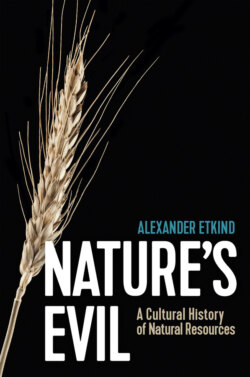Читать книгу Nature's Evil - Alexander Etkind - Страница 34
Squirrel
ОглавлениеIn the east Slavic languages, the first word to denote a monetary unit was ‘kuna’, a marten. Founded by the Vikings, the city of Novgorod – the first organised power on the territory of contemporary Russia – used millions of squirrel pelts for clothing and trade. Local strongmen asked the peasants of their own estates to supply the pelts as a form of quit-rent. Later they colonised all of North-Eastern Europe right up to the Urals in pursuit of this squirrel. Much earlier than the French entrepreneurs who harnessed the wealth of furs in Canada, Russian furriers learnt to use the experience and technology of the northern tribes. Curiously, The Russian Primary Chronicle attributes the discovery of northern fur to Alexander of Macedonia. ‘We have encountered a divine marvel … Their language is unintelligible. They point at iron objects and make gestures as if to ask for them. If given a knife or an axe, they supply furs in return.’10 These people, the Yugras, were ‘unclean’, and therefore Alexander locked them up in the mountains of the northern Urals. They will be liberated on the Day of Judgement, but until that time it is their fate to trade furs for iron goods. This exchange by dumb show set the pattern for many subsequent events.
In the forests of Eurasia, the habitat of the squirrel coincided roughly with the human habitat. Dry, lightweight, and easily preserved under the right conditions, the squirrel pelts were an ideal commodity. For three centuries they were the mainstay of exports from Novgorod. The thin, light and supple skins were made into warm garments, stockings, hats and much else besides. Even taking transportation costs into account, these goods were cheap. A widely dispersed resource for mass consumption led to prosperity and relative equality. While Novgorod was trading in squirrel pelts, it enjoyed wealth, independence from a ruling prince, and something like democracy. In the winter, when their coats were thicker, squirrels were shot with blunt-tipped arrows so that the fur wasn’t damaged. Any peasant could turn his hand to this task. The pelts were scraped, washed and dried. Curing them was a time-consuming and skilled job – this was women’s work. Brought by sledge to Novgorod, the pelts were packed for export or prepared for local use. The trade in squirrel pelts was one of the main enterprises of the Hanseatic League, which included Novgorod. In the fourteenth century, a vast trading post known as the ‘German Court’ was built in the city. After buying and sorting the pelts, the Germans tied them into bundles and packed bundles of the same quality into barrels. Dozens of Germans were stationed in Novgorod to carry out this work. As the monopoly purchaser of a communal resource, the Hanseatic trading post was able to hold costs down and make excess profits. In accordance with mercantilist logic, the Germans were interested only in pelts, leaving profitable tasks such as sewing and tailoring to their partners at home. The Novgorod furriers worked only for the local market.
In the spring, barrels of pelts were sent down the Volkhov River, across the northern lakes to the Neva, and then on across the Baltic to Lübeck and Bremen. From there Russian fur continued its journey to London, Paris and Florence. In exchange, the Novgorod merchants received silver, arms, textiles, herring and non-ferrous metals. When there was hunger in the city they also imported grain. The fur trade guaranteed a significant amount of silver, which the trading republic needed for its mercenaries. By the end of the Novgorod Republic, fur was exported on a massive scale: 12,000 squirrel pelts travelled thousands of miles from the East so that London furriers could make one particular robe for Henry IV. But the bulk of imports were destined for mass consumption. A total of half a million squirrel pelts were exported per year.11
As the squirrel population became depleted, the Novgorod merchants had to advance into unknown territories further east and force the local tribes to procure pelts. The trade was risky: in 1445, Yugra tribes inflicted defeat on a 3,000-strong detachment from Novgorod. And, in the fifteenth century, London imported fewer furs. The reason was that squirrel pelts could not compete with the wool textiles which England had begun to produce in increasing quantities. Although the Hansa traded in many goods, such as grain, timber and cod, it went into decline following the collapse of the fur trade. The fall in profits led to clashes among the Russian principalities. Resource-dependent states always worry about running out of raw materials. They are actually more at risk from the advent of new technologies which make their resources redundant.
